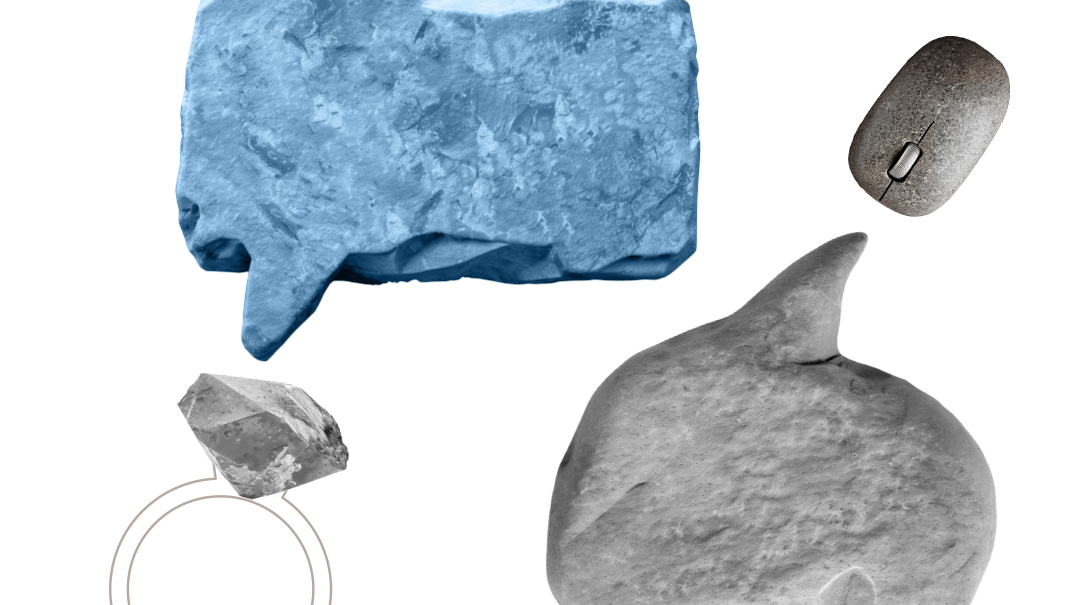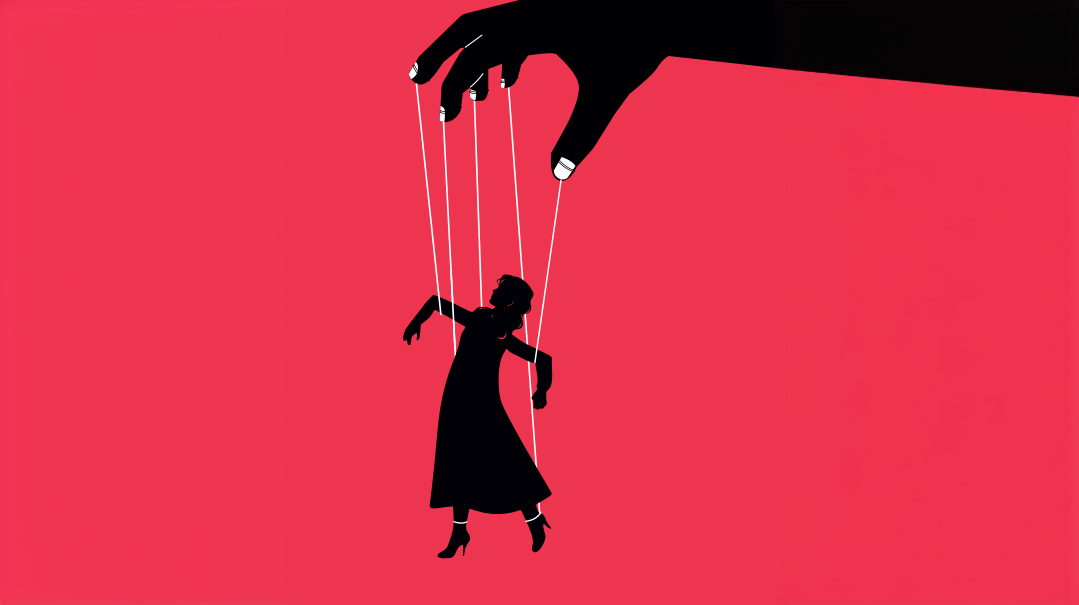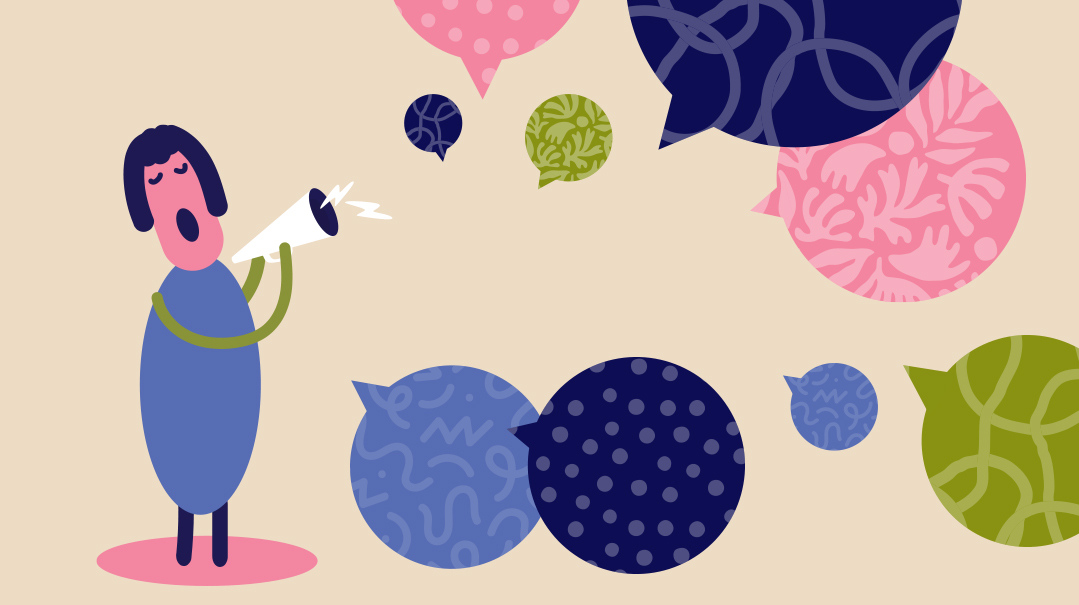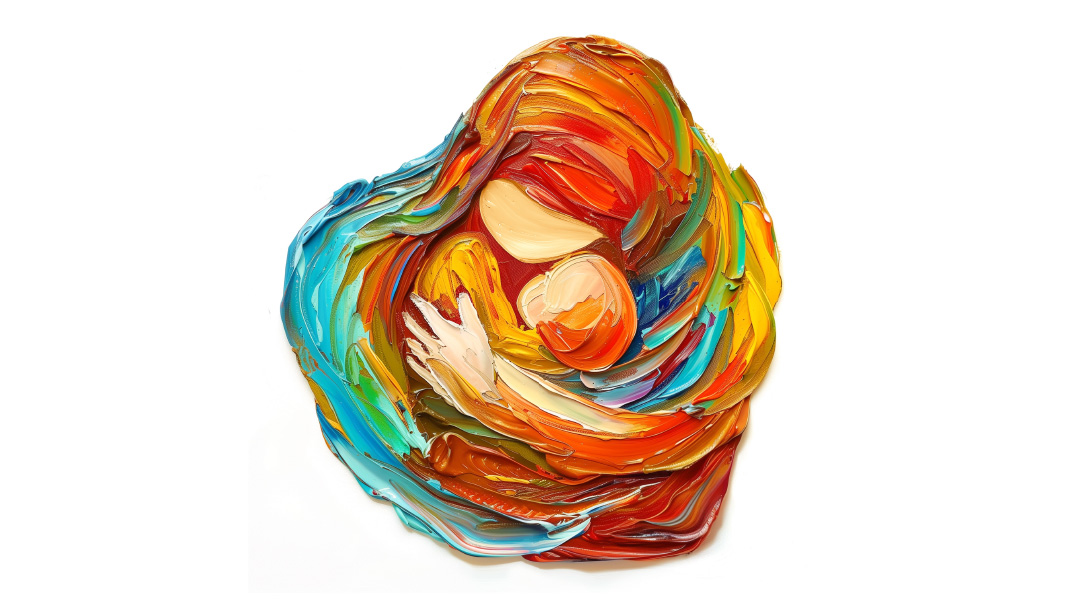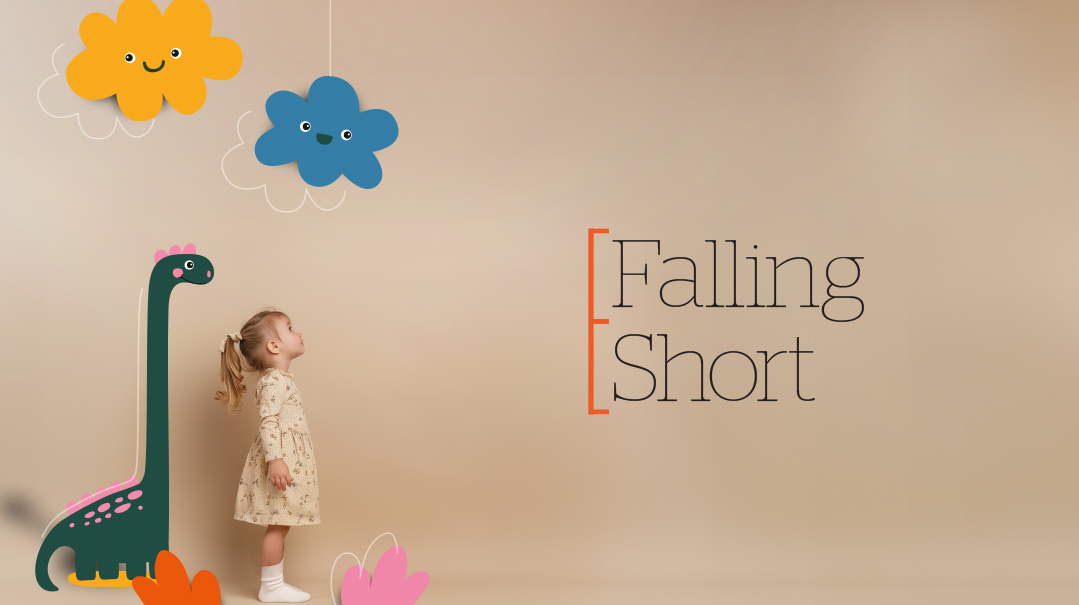Artistic License

Artists observe the world around them — and then bring those observations to life on their canvas. All art must be inspired by something — but when does that inspiration cross the line into theft? Artists and experts get real about plagiarism hitting the palette
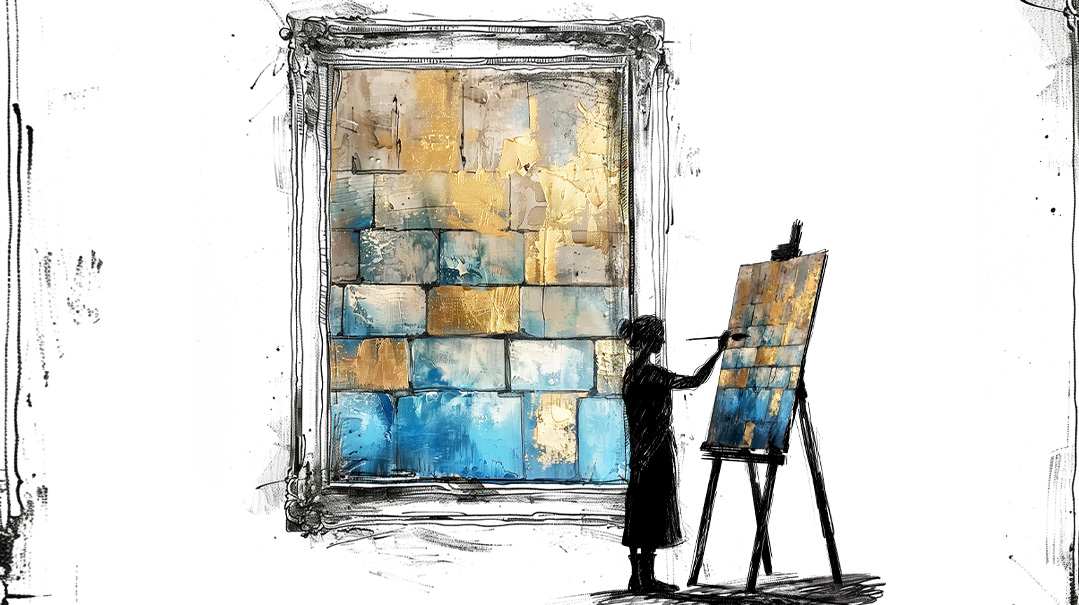
Chani Judowitz’s painting has become iconic of the unity Klal Yisrael felt after October 7. You’ve probably seen it — an IDF soldier hugs a chareidi man with flowing peyos and a tall black yarmulke. The painting feels suffused with light and hope; the gold leaf highlights seem to offer hope of brighter times to come.
The painting was inspired by a video, posted on Living Lchaim, in which the camera follows one soldier as he hugs some chareidi men operating food stations at what seems to be an army base. After watching the video, Chani says she couldn’t stop thinking about it, particularly one frame where two men hug.
Although the frame she focused on wasn’t a clear shot, it was enough for her. She felt compelled to paint it, and describes the ensuing creativity it fostered, “pure inspiration,” that came straight from the heart.
“It didn’t take long to paint,” Chani says. “I saw it on Friday, painted it on Motzaei Shabbos, and finished it Sunday morning.”
After posting it a few hours later, it went viral, and by the end of the day, the painting had sold. She’d also made some prints available for purchase, and contributed half of the profits to tzedakah.
Several weeks later, someone messaged Chani, saying they had spotted her painting on a WhatsApp status. Intrigued, Chani asked for and received a screenshot of the video, where she was able to see her painting in the background, hanging on a wall.
Looking at it closely, she could see gold leaf, which told her she was looking at an original, and not a print, yet something about it felt off. She had sold some semi-originals, but this didn’t seem to be one of those editions. She was sure that while this painting looked identical to the one she painted, it wasn’t hers.
“The hair was slightly different, the colors on the elbow. It was a very close copy, but not it,” Chani says.
She decided to contact the man in the screenshot and ask him where he got the painting. After speaking to him, she learned his wife had seen Chani’s painting online, and painted a copy for herself. She told Chani that people had seen the painting at their home and were reaching out, expressing interest in copies of the painting.
Chani explained to her that she had copied an original artwork. The couple expressed remorse and asked what they could do to make things right. While she normally would not have agreed, in this situation, Chani allowed them to keep the painting, as long as they credited her. The couple also credited her on IG and added links to Chani’s website.
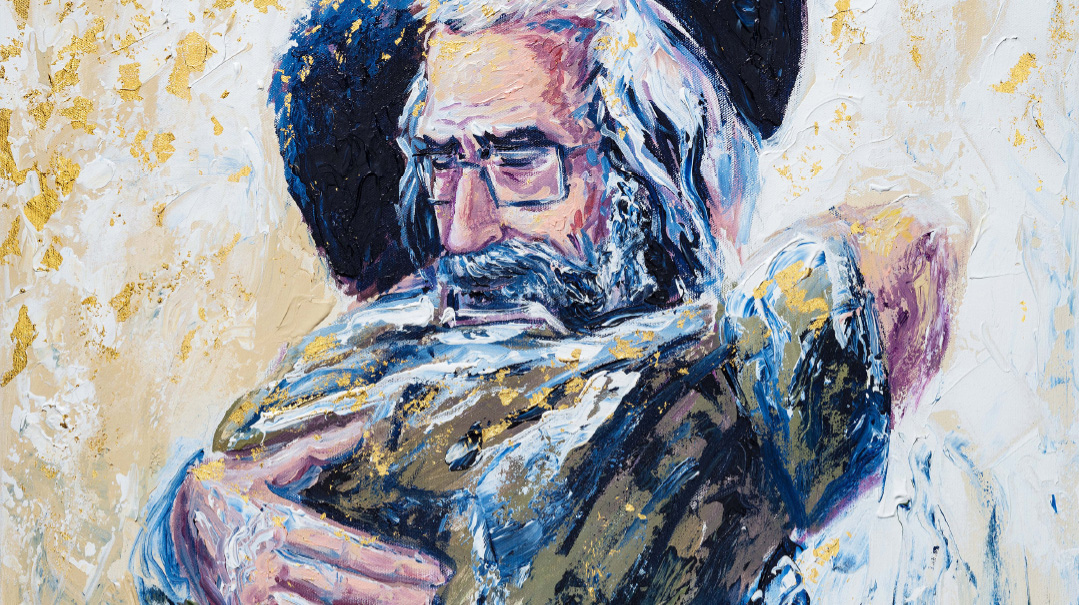
A Common Story
Plagiarism is no stranger to the art world. Only last year, the Supreme Court ruled against the Andy Warhol Foundation for using a photograph taken by Lynn Goldsmith. Zara, Kohl’s, and Forever 21 were all sued by artists who claimed their works were used without their permission.
The Jewish art world sees similar problematic copycatting. Shifra Scheinman Crawford, an artist from Monsey, remembers spotting a painting on Pinterest that seemed remarkably similar to one she had painted. The painting showed two silhouetted men walking down a street in Geula. This artwork was Shifra’s brainchild. She merged a photograph she had taken of a street in Jerusalem with a scene she imagined playing out on that street. She contacted the artist who told her she’d copied Shifra’s art for an art class and was so proud of the result, she posted it on her Pinterest account.
Shifra asked that she remove the painting from her feed, but the woman refused. She told Shifra it was a form of praise to have artwork copied — a common defense artists hear when they confront other artists about artwork uncomfortably similar to their own work. An artist friend of Shifra’s similarly discovered an acquaintance had printed one of her works off Instagram for her teenage daughter to copy in art class. “She copied it because she admired it,” Shifra says. “But my friend was very upset. Artists are upset rather than happy when people copy their art.”
Mira Eisen, a renowned Israeli artist whose work has been exhibited at multiple galleries worldwide, has seen her work copied as well. But in her case, someone tried to pass the copies off as an original. “Someone took a photo of one of my paintings and created a file that allowed them to reproduce the art at will,” she says. “They sold multiple copies with my name on it.”
People likely don’t think about or understand the value of art, Shifra says. She’s been contacted by women in art classes or art circles who ask her if she could send them a copy of her latest painting so they could copy her work. They ask as casually as if they were asking for the time, she says.
But creating art is real work: an artist works to conceive an idea, then places the scene on the canvas, and finds the exact shade of color to reflect what she saw in her mind’s eye. Many people have a hard time grasping this, but understand after an artist explains it.
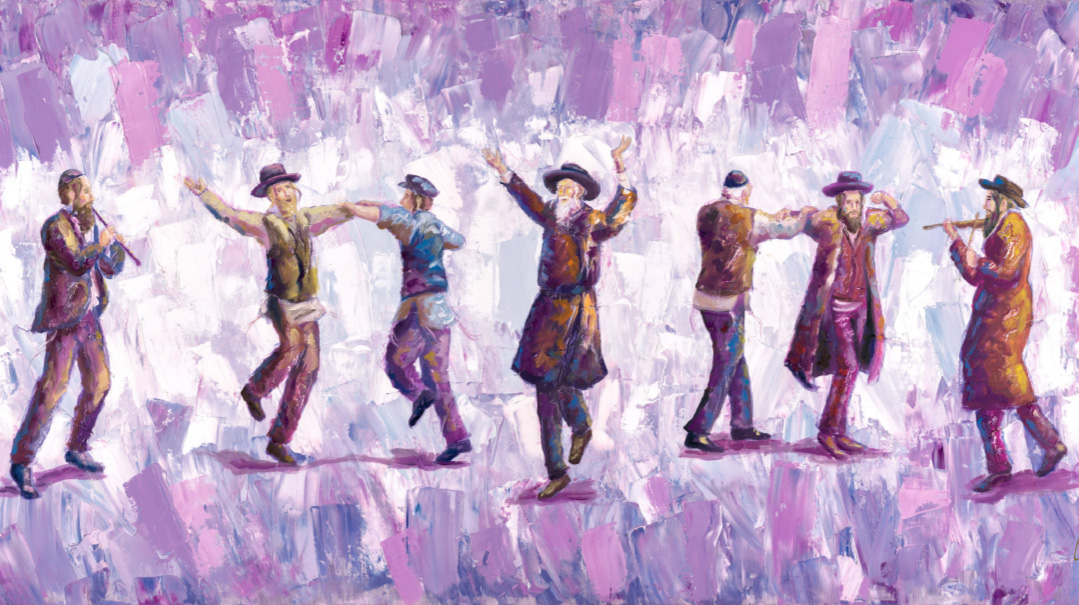
Pure Plagiarism
Theoretically, plagiarism seems like a black-and-white issue: If you copy an original work that belongs to someone else, that’s plagiarism. Yet artists often come across copies of their work.
“We frum people live in a society and culture that values conformity tremendously,” says Chani, “so what’s going to end up happening is the artists see a type of look that’s popular, and they think, let me create this type of work, versus thinking originally.”
Shifra agrees.
“I believe that we are such a sheltered community that we copy each other,” Shifra says. “Our interiors are similar. Jewish mothers use the same brand of carriages for their babies. I think we copy each other subconsciously more than anybody else.”
Consumers want a very specific style of art — often what they’ve seen hanging in other people’s homes. Artists want to create products that sell and make money. When you have a client who wants a specific painting, but balks at the price, that’s where trouble begins.
“I’ll give someone my price for a painting and it will be out of their budget,” says Shifra. “They will then try to message other artists and ask them if they can copy a certain painting. Some artists agree to do it.”
Chani says for some people it’s all about beating the system to get what they want at a price they’re willing to pay. “People see art on Instagram and see what’s popular. They’ll say, ‘I want this type of artwork for my house,’ ” says Chani. “There’s nothing wrong with that if you go to the artists directly, but some people will hire somebody else to make them a cheaper version of that original artwork.”
Mira says there are artists whose sole focus is to paint copies of other people’s art. “One of my students told me she took a course with someone who taught people how to copy others,” she says.
Chani knows someone who was hired to paint copies of expensive, premium Jewish art. The artist would make a copy of a painting, and the client would pay $800 for paintings that were priced $8,000 to $10,000 for the original.
“That’s not okay,” says Chani. “If you’re going to go copy somebody else’s work that literally looks identical or exactly the same style, that is just pure plagiarism.”
Shifra has had this experience, as well. One time after turning down a commission where she was asked to repaint one of her own canvases with an adjustment, she heard from a fellow artist that the same man had contacted her asking her to copy Shifra’s painting.
She’s been on the other side, as well.
“I’ve had requests where people send me a painting made by somebody else and asking me if I can do it for them, and how much I would charge,” she says. A lack of education and knowledge may be the source of the problem. Artists and consumers alike may not realize that aside from the ethical issue, copying a painting is also legally problematic.
While an idea itself isn’t protected, the expression of an idea is protectable. Copyright law protects a painting from the moment it’s painted.
“Copyright law protects the work from the moment you put it into what’s known as a physical medium of expression,” says Michael Steinmetz, founding partner at GS2Law and head of the Intellectual Property Department.
“You’re not allowed to copy a painting for your own use. Even if you purchase a painting, that doesn’t give you rights to the underlying work. Even if you purchase an original, you can’t make copies and distribute it to your kids. You can’t have somebody repaint it out in China. You don’t own the underlying work just having purchased the canvas.”
Art classes aren’t exempt from this protection either, says Mr. Steinmetz. “The paintings that are actually under copyright last the life of the painter plus an additional 70 years, and most certainly cannot be reproduced,” he says.
For the artist, knowledge goes a long way, as well. An artist is afforded much stronger protection by the courts if they have a copyright registration for each piece of artwork. “It’s a simple matter of filling out a form,” says Michael Steinmetz. “The United States Copyright Office typically turns that around in a couple of months.”
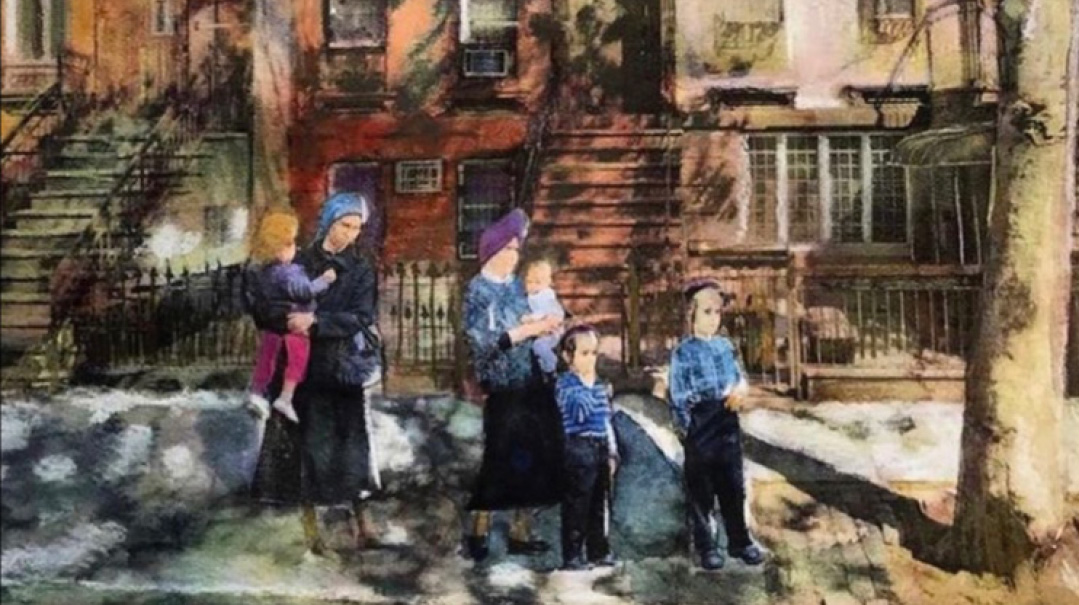
What Came First?
When something looks exactly or almost exactly like the original, it’s a clear case of plagiarism, and people who do this kind of copying can be subject to a lawsuit. But it’s murky when artwork is similar or reminiscent of another artist’s work. Questions arise: How similar is too similar? Does anyone own the rights to a particular scene? Does anyone have the right to claim specific color combinations? Does anyone own a specific style of painting?
In the modern Jewish art world, these questions are particularly gnarly. Many artists gravitate toward similar scenes because they resonate with the frum world.
Consumer demand encourages artists to supply this demand, and the market can become flooded with paintings of similar scenes — the Kosel, Kri’as Yam Suf, and women lighting Shabbos candles in similar modern abstract style currently popular with consumers.
Some artists believe other artists are producing work that, if not an exact copy, is eerily similar.
Moshe Frank is the founder of Leviim Art Gallery, and he also organizes the Annual Jewish Art Fair in Crown Heights. He says artists paint what resonates with people, and in the frum world, those scenes can repeat themselves. “There are certain memorable moments in Yiddishkeit, and people know what they are,” he says. “Either it’s a moment or a scene — the Kosel, Kever Rochel, a Shabbos table, Simchas Torah, a hachnassas sefer Torah, or a chuppah. So the question is — is a theme something that is unique to a specific person? If someone says they were plagiarized because someone also made a Kosel, I think that’s obviously a stretch.”
Moshe Frank doesn’t support artists copying each other. He says you have to draw the line when it’s a copy, but it’s a nuanced topic. He says there must be a differentiation between an actual copy versus subject matter or a trend. He thinks that when artists say they’re being copied, it’s because of popular trending painting styles. In reality, he says, it’s difficult to copy the essence of another artist’s painting.
“You can’t really copy in art because art is a very feeling based thing,” he says. “It’s very creative and emotional.”
Artists often call him to ask what’s trending.
“I personally tell people paint whatever you feel. However, I also tell them paint ideas that people already know and want — like the Kosel or a chuppah. I don’t tell them look at this artist and copy them. I tell them do your own style.”
Zisi Naimark, an interior designer who minored in art history, often sources fine art for clients. She says certain scenes are universally owned, and no one person can lay claim to any of them. “You can compare it to fairy tale tropes,” she says. There’s the ugly villain and the handsome hero. No one owns those ideas. Certain concepts can’t be plagiarized. It’s like saying that someone’s copying you because they took a black-and-white picture of the Eiffel Tower. That’s an iconic image,” she says.
She questions the idea of originality when so many artists paint the same subjects. “People who are concerned about being original should try to come up with original topics. For example, they can paint bikkurim or Gan Eden instead of another Kosel. If you’re going to be drawing the same five topics that everyone else is creating, don’t be so concerned with copies.” she says.
Chani Judowitz agrees that certain scenes have been explored many times by different artists. “An artist should come with their own voice and try to find something really unique that hasn’t been done before,” she says. If artists stay true to themselves, they will build a brand, says Moshe Frank, and people will want their paintings.
“Real artists that sell for a lot of money built a name for themselves. I don’t think they’re worried about copies because they built their own brand already, and people want them and they don’t want something else,” he says. “But overall I would tell artists not to worry about copies. If people are copying, it probably means you already have your own brand and people want your brand for its value and creativity. I don’t think it’s a major issue, and it’s just what’s going to happen. It’s a natural thing. You want to go start suing everybody — I don’t know how far you’re going to get — but hey, go for it.”
But most artists say they have their own unique style that sets them apart, which is what makes things sticky.
Zisi says she looks for a few distinguishing characteristics on a canvas to determine if a painting seems copied. “For art to be considered plagiarism, the subject, point of view, and art style all must be a close match,” she says. “A departure from an artist’s regular style, or a leap in the quality of their work, are indicators that a closer look is warranted.”
She questions artists who claim ownership of a color palette. One current popular color combination in the modern Jewish art world is a gold and white impasto — a technique where paint is thickly laid on a canvas so that brushstrokes are visible. She says this has been popular worldwide for a while now.
“I recently bought an artwork of a golden white abstract for a client,” Zisi says. “It was from a non-Jewish creator that’s been around for over 50 years, long before this style hit the Jewish art scene. There are hundreds of similar impasto artworks available online from Wayfarer, Overstock, Etsy, Saatchi, and anywhere else you can think of. It’s ignorance to say that this is one person’s style. Maybe it’s a lack of information about the art world because anyone who has a view of that space knows that gold and white impasto is all over.”
Moshe Frank says that often there are general trends that everyone tunes into simultaneously, and current trends play a role in what’s popular. Years ago, he says realistic art was popular. Today it’s more abstract, and that’s the style current artists gravitate toward. “Artists are angry when people copy them, and rightfully so,” he says. “But I could say, this is a current trend that people are using — a white background, muted colors, and gold leaf. Artists could make it as if they’re unique, but if you walk into TJ Maxx or Home Goods, you’ll see that all the ‘art’ people are copying has been used in the general world for decor art. You could almost confuse it with the modern day Jewish artists. So the fact that one artist picked it up, and now everyone else is copying — maybe they created an awareness of what’s currently trending, but to say that you’re copying it would not be correct.”
Because these are the trends, and many artists are gravitating toward them, it gives buyers more of a choice, and that’s where cost comes in to play.
“If someone’s going to buy a knockoff of a particular artist, it means they can’t afford your $10,000 painting, and now are looking for alternatives,” Moshe Frank says. “A lot of artists and dealers and a lot of galleries and dealers say, ‘Oh, you want a Huvy? You probably can’t afford it because it costs $80,000. I have this artist that’s similar for three to five thousand dollars.’ That’s something dealers will often tell people. No one’s not buying a Huvy because they found a copy. It’s just not the way it works.”
Zisi Naimark says many styles of painting popular now can be traced to artists of previous generations. “It’s very difficult to own the creation of an artistic style,” Zisi says. “In fact, true origination of a new art style is a once in a generation occurrence.”
While she thinks that copying an art style alone can’t be considered plagiarism, she says educated artists will attribute their inspiration to a source by saying they draw on the style of Artist XYZ.
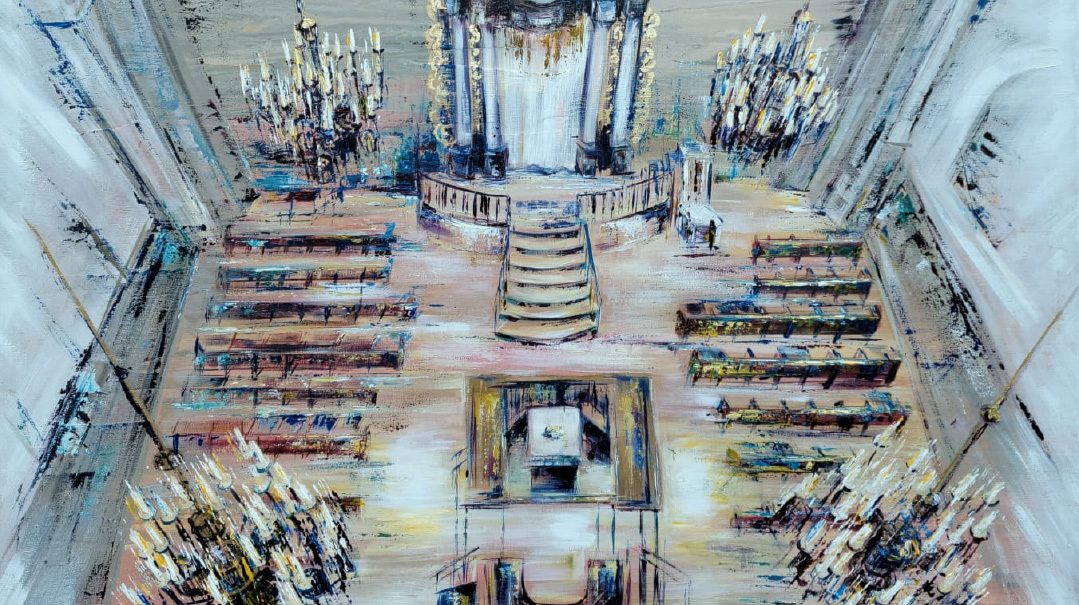
The Law
Copyright and trademark law have set standards to determine what constitutes plagiarism in instances that seem less clear-cut. While there are common themes in Jewish art, the expression of an idea is protectable.
Michael Steinmetz acknowledges popularity dictates where artists will direct their efforts, which make some subject matter common among artists. That isn’t necessarily a problem, he says, as long as it is the artist’s own individual expression.
“If you’ve got an idea for something and you express it in a particular way, your particular expression, and derivative works of your expression, are protected by copyright law,” he says. “The painting of a woman lighting candles is an idea that can be expressed in myriad ways — possibly thousands of different ways. You’ve seen that painted over and over again, each with a unique touch.”
It’s that individuality and uniqueness that gives an artist a protective edge. A lack of that presents a problem. “Flattery might be the biggest compliment, but it’s not helpful to an artist’s career, and is, in a way, also insulting,” he says. “Somebody couldn’t create their own and had to take from someone else. It’s very frustrating to an artist. Many artists think maybe they have more originality than perhaps they do. They don’t necessarily realize they’re living in their own bubble. They don’t necessarily realize that what they’ve created, while beautiful, may also be similar to some other artwork and that the protection is actually less than they would like. On the flip side, they deserve to have their own unique creations protected. There’s got to be a push and pull back and forth on that to make sure you hit the right balance.”
A consumer might be misled when looking at a canvas, and assume it was painted by a specific artist. There are forms of trademark that can protect forms of expression that confuse the consumer from thinking that an item might come from a particular source, says Mr. Steinmetz.
“The law is set up to protect the consumer from thinking that they’re buying something they’re not,” he says.
The classic example is the glass Coca-Cola bottle. When people see it, the brand is instantly recognizable. The same concept applies to art. If a painting is reminiscent of a particular artist, yet was painted by someone else, the artist may have a claim. “If a painting is confusing as to the source, that would add legal protection,” he says. “Is it likely the consumer would be confused about where the painting came from? And because the modern Jewish art world has a narrower customer base, it could be argued that there it would likely be easier to prove that there is in fact confusion.”
At what point does a similar painting become infringement? “If someone takes your painting, looks at it, and then creates their own expression of it — it depends on how much they’ve taken of the actual expression, because certain common ideas are not in itself protectable.”
The standard for determining copyright infringement depends on how much original material was taken from the original. Michael Steinmetz says the standard for copyright is having an original expression. The originality standard is incredibly small or minimal because the courts don’t want to be the arbiters of what’s considered original, he says.
Determination of infringement sometimes depends on whether the artwork could be considered transformative. If the new expression changed the medium, or changed the way that it appeared, it could be considered transformative. “You have to have taken a material amount rather than a minimal amount,” says Michael Steinmetz. “So if they took a tiny amount, that can be okay, particularly if that tiny amount is not recognizable, or it’s spread across multiple works. If they’re taking a small amount of original expression and transforming it, it could fall under fair use, and sometimes that is allowable. But there’s a high standard to overcome in order to transform the original expression into something unique and completely different.”
An artist can’t copy a chunk from another canvas, and then build around it. It’s not just the color palette, it’s also the way the painting is set up.
“I suspect that when the expression is being copied, you can actually see it,” he says. “It’s not something that requires a significant leap to say, ‘Oh, I get it.’ They took that from there. It’s more in your face.”
There’s no bright-line rule of how much is too much of someone else’s artistic expression, Mr. Steinmetz says. “But since the standard for originality in expression is so low, if an artist has taken any of that originality, they could be in trouble and have to answer for it.”
(Originally featured in Family First, Issue 894)
Oops! We could not locate your form.

